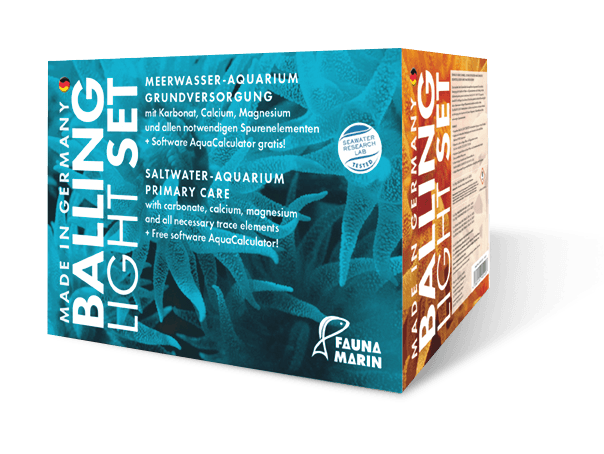Sodium
Sodium is one of the elements essential to all animals. In the organism, sodium is the ninth most common element together with chlorine and is the third most common inorganic ion after calcium and potassium. Sodium is important for the absorption of trace elements and nutrients by corals. Sodium controls the flow of substances to the cells and is essential for the transmission of stimuli and rapid cell functions.
What’s that:
Sodium is part of the common salt in our sea salt mix. Together with chloride, sodium forms common salt, i.e. the basis of sea salt. Sodium is always balanced via the sea salt and is not added separately as sodium.
Problems:
Too much or too little salt causes problems for all aquarium inhabitants. Poor growth, loss of colour, no polyps or tissue expansion are the initial signs. The salt concentration should always be set in the range 33–35 ppt.
Measures:
Regular control of salinity, replacement of evaporated water with osmosis water, replenishment of sea salt to compensate for losses through discharge.
Indicator species:
If the value is too high, leather corals, acroporids and gorgonians react quickly with reduced polyp opening, loss of colour and contraction of the tissue. With too low values, the same reactions take place.
Value too high:
Observe salinity and adjust salinity accordingly.
Value too low:
Observe salinity and adjust salinity correctly.
| Variety | Alkali light metal |
|---|---|
| Benefit | Cell functions, basic element seawater |
| Standard value | 10.700 mg/l (0,26 US.liq.gal.) |
| Skill Level | green |
| Source | salt mix, supply systems trace element mixtures, coral feed |
| Available | Professional Sea Salt |
| Importance 1–6 | 6 |
| Detection quality | safe |
| Relation values | chloride |

Balling Light:
When using the Balling Light supply system, the salinity in the aquarium slowly increases. The resulting sodium chloride is balanced by the trace elements. The Balling Light system ensures a stable ion balance
Together with chloride, sodium forms the common salt, the sodium chloride, which makes up the vast majority of the sea salt mixture by volume. Around 86 % of the salts in the world’s seas are sodium chloride. The sodium chloride for our aquaria is generally obtained from salt flats from the sea or by mining salt deposits. During the process of diagenesis, which takes millions of years, the salt is deposited at depths and separates chemically. As a result, very clean salt is obtained from mining, which can excellently be used for our purposes. Seawater saline salts of natural origin, on the other hand, may contain higher quantities of organic additives that are undesirable.
Tip:
Pay particular attention to the sodium concentration in your analysis when using cheap no-name salts. These are often very high, because missing other and expensive elements are usually compensated with the much cheaper sodium chloride. The sodium concentration of the tank water is generally regulated by the salt content. A targeted individual dosing is not provided.